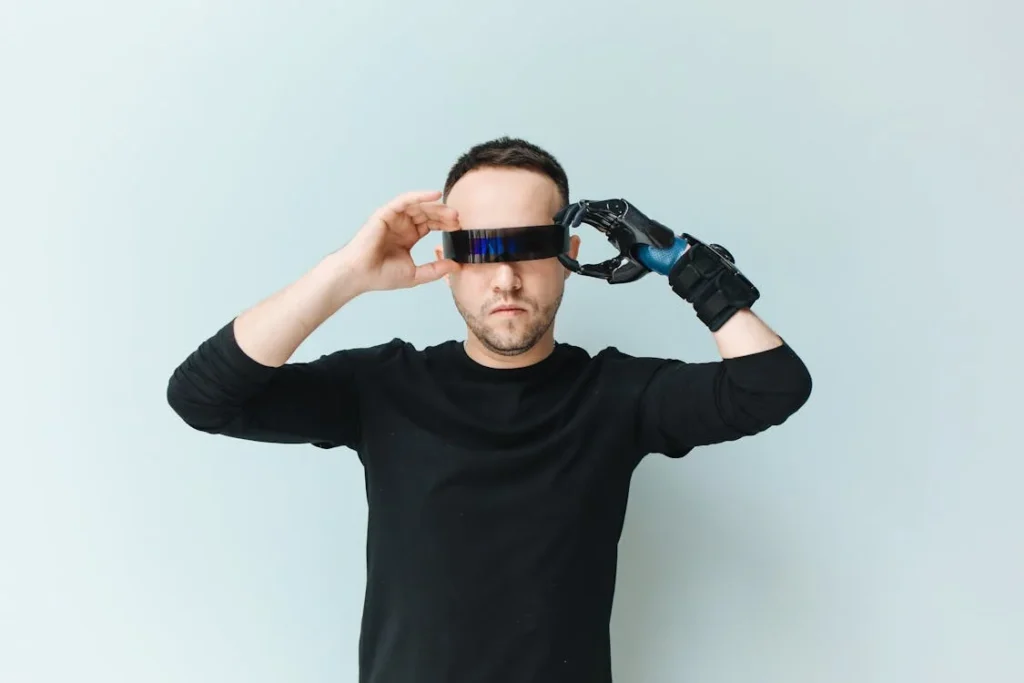Designing a bionic hand isn’t just about building a machine that opens and closes. It’s about recreating one of the most powerful tools the human body has ever known. Our hands don’t just grip—they feel, adjust, balance, and respond. At RoboBionics, we’ve spent years trying to understand every little detail behind a simple grip, because there’s nothing simple about it.
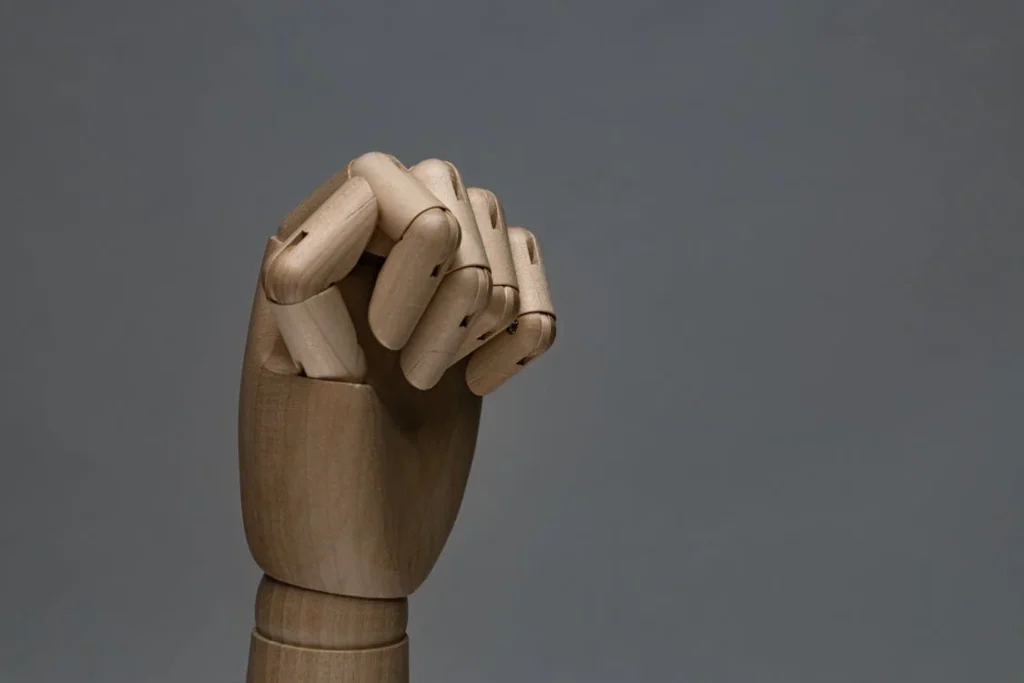
Understanding What Makes a Grip “Human”
If you ask someone what their hand does best, they might say gripping. But gripping isn’t just one action. It’s a mix of many small things happening at once. The fingers must shape themselves around an object.
The pressure must adjust so nothing slips. The hand must sense how heavy the object is, and whether it’s hard, soft, or fragile. All of this happens in a split second, without you thinking.
And that’s what makes designing a bionic grip so hard—it’s not just about holding on, it’s about knowing how to hold on.
At RoboBionics, we’ve broken down every part of the human grip to figure out what really matters. One of the biggest challenges we face is making the grip feel alive—not stiff or robotic.
A real grip is flexible. It changes the moment the object moves. That’s something most machines can’t do. They either grip too hard or not enough. And when you’re holding something important, like a phone, a glass, or a pen, the last thing you want is to drop it or crush it.
So how do we make the grip feel more human? It starts with understanding movement, pressure, and feedback—not as separate parts, but as one natural flow. We don’t just copy what the hand looks like. We study how it responds to life.
Challenge: Making the Hand React Instantly
In the real world, your hand doesn’t wait. If your water bottle slips, you grip tighter right away. That reaction takes less than a second. Now imagine a bionic hand trying to do the same thing.
It needs to sense the slip, read the signal from your muscles, send that signal to its motors, adjust the grip, and still look smooth while doing it. That’s a lot to ask from a machine.
This was one of our toughest problems early on. Most prosthetic hands out there lag behind. They take too long to respond. By the time the grip tightens, the object is already gone. We knew we needed a better system—one that could match the speed of real life.
That’s why we built Grippy™ with ultra-fast sensors and a powerful microcontroller. When you send a signal through your muscles, the hand doesn’t just listen—it acts. Our tech picks up even the smallest muscle signals and responds within milliseconds.
That means you can move, adjust, and grip just like you used to—with no delays.
This kind of instant response changes everything. It brings back confidence. You don’t have to second-guess if the hand will keep up. It just does.
Challenge: Holding Objects That Aren’t Perfectly Shaped
Another real challenge is dealing with objects that don’t fit neatly in your hand. Think about it. Most things we hold every day aren’t round or flat. They’re uneven. Some are soft, some are slippery.
Some are shaped weirdly, like a toothbrush or a peeled banana. And yet your natural hand figures it out without any fuss. It adjusts its grip based on the shape and feel of the object. That’s the kind of intelligence we wanted in Grippy™.
But teaching a machine to do that isn’t easy. You can’t just program one grip pattern and expect it to work for everything. We needed something more flexible—literally.
That’s why Grippy™ has individually moving fingers, each powered by its own motor. This gives it the ability to wrap around objects, adjust finger angles, and create custom grips on the fly. And because we’ve added pressure sensors in the fingertips, the hand knows exactly how firm or gentle the grip needs to be.
Whether you’re holding a metal spoon or a soft fruit, Grippy™ figures out how to make it work. And it doesn’t just guess. It learns. The more you use it, the more natural it becomes.
Challenge: Giving Users the Feeling of Control
Many bionic hands can grip. But do users feel in control? That’s another story. One of the most common frustrations people face is not being able to feel what they’re doing.
The object is in their hand, but it might as well be invisible. There’s no feedback. No sense of connection. And that can make the grip feel unsure or clumsy.
We wanted to fix that. Because a good grip isn’t just physical—it’s emotional. When you feel the object in your hand, you trust it more. You move more freely. You stop thinking about the hand, and just focus on the task.
That’s where our Sense of Touch™ technology comes in. By placing smart sensors in the fingers and translating that pressure into gentle vibrations on the skin, Grippy™ gives users a way to feel again.
You can tell if you’re holding something too tight or if it’s slipping. You can make quick changes without looking. That feedback loop is what makes the grip come alive.
And it’s not just a technical feature. It’s a confidence booster. It tells users, “You’ve got this.” And that message can be just as powerful as the grip itself.
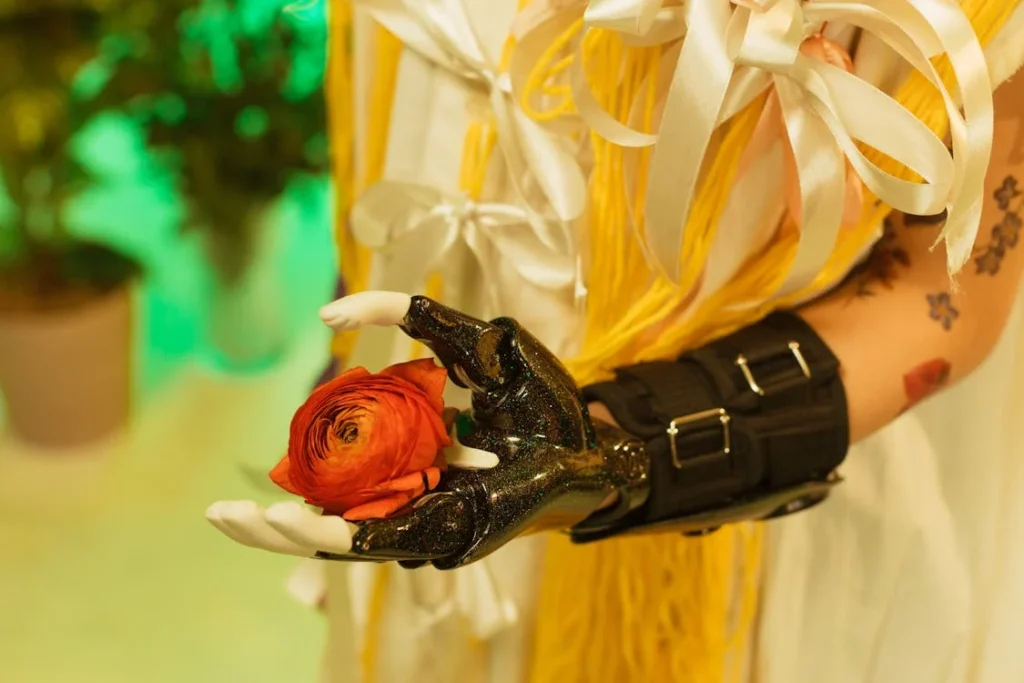
Finding the Balance Between Power and Precision
One of the hardest parts of designing a bionic grip is making it strong without being rough. Our hands are naturally good at this. You can lift a heavy box one moment and gently hold a baby’s hand the next.
Your fingers know when to be firm and when to soften. That’s not just strength—it’s control. And getting that same balance into a bionic hand takes a lot of thought.
Most prosthetic hands in the market lean toward one side. Either they grip too softly and drop things, or they hold on too tightly and risk crushing what’s in their grasp.
Neither option feels right. We wanted Grippy™ to do both—hold with strength when needed, but always stay gentle when the moment calls for it.
Challenge: Designing for Variable Pressure
The key to balance is variable pressure. A human hand constantly changes its force based on what it’s holding. You grip tighter when the object moves or feels slippery. You ease up when it’s light or fragile.
This constant adjustment happens without thinking. But in a bionic hand, every shift must be measured and managed by sensors, motors, and smart software.
To solve this, we designed Grippy™ with responsive actuators that can control how hard each finger presses down. If you’re picking up a plastic cup, the hand applies just enough force to hold it without cracking.
If you’re lifting a steel tumbler, the pressure increases automatically. That dynamic grip range is what makes Grippy™ feel more like a real hand—and less like a machine.
It’s not just about holding the object either. It’s about what happens when you move with it. When you walk with a full cup or twist a bottle open, the object shifts in your hand.
That’s where precision matters most. Grippy™ monitors those changes in real-time, tightening or relaxing its grip so that nothing falls or slips.
We had to spend a lot of time tuning this system. Too sensitive, and the hand would constantly readjust. Not sensitive enough, and it would miss the signs. We found that sweet spot where strength and sensitivity work together—giving our users full confidence in every motion.
Challenge: Adapting to Different Hand Sizes and Needs
No two hands are the same. Some are small, some are large. Some users are children, others are adults. Some need help holding tools at work, while others want to write, cook, or simply carry their lunch. That variety in need makes bionic grip design even more complex. One-size-fits-all does not work—not in prosthetics.
That’s why we made Grippy™ as adaptable as possible. From the grip width to the finger reach, we engineered it to accommodate a wide range of everyday items. We also offer multiple sizes and grip patterns that suit different lifestyles.
For someone working with tools, we enable stronger grip modes. For a student writing in a notebook, the hand can shift into a gentle hold with more finger flex.
The wrist also plays a role. In some tasks, being able to rotate the wrist makes a huge difference. Whether you’re turning a doorknob, stirring a pot, or reaching across a table, the wrist needs to follow the hand.
So we’ve included optional wrist modules that add this flexibility, without making the system bulky or hard to wear.
This focus on real-world adaptability means users don’t have to change their life to suit the hand. The hand changes to fit their life.
Challenge: Handling Motion Without Losing Control
Gripping something while standing still is one thing. But holding it while you walk, talk, or move your arm around? That’s a bigger challenge. Most people don’t even realize how often their grip shifts during motion.
The hand must maintain enough pressure to keep the object steady—even as your arm swings, turns, or pauses.
Many prosthetics can’t manage this. As the body moves, the object slips. The grip doesn’t update quickly enough. The result? Spills, drops, or worse, embarrassment. We didn’t want our users to go through that.
So we built a smarter grip. One that doesn’t just respond to movement, but anticipates it. Grippy™’s sensors constantly monitor grip force, finger angle, and pressure.
If any part of that changes during motion, the hand adjusts immediately. This gives users the freedom to walk with a drink, carry a bag, or pass an object to someone else—without thinking twice.
The real-world impact of this feature is huge. People stop hesitating. They stop worrying if the object will fall. They just live. That’s the goal. To move with confidence and not feel limited.
Challenge: Making It All Feel Natural
Even when the grip is strong, smart, and fast—it has to feel right. That’s what many prosthetic hands miss. The grip may work, but if it doesn’t feel like your own, you always notice it. You stay cautious. You use it less. You rely more on your other hand.
We didn’t want that for our users. We wanted Grippy™ to blend in. To feel like a natural part of their body. That meant smooth movement, quiet motors, and soft, rounded fingers. We made sure the hand didn’t just look right, but moved right too.
From the very first touch, users can feel the difference. The grip doesn’t jerk or buzz. It responds calmly. And over time, the hand becomes second nature. That’s when the magic really happens—when the user forgets they’re wearing a prosthetic, and just starts doing.
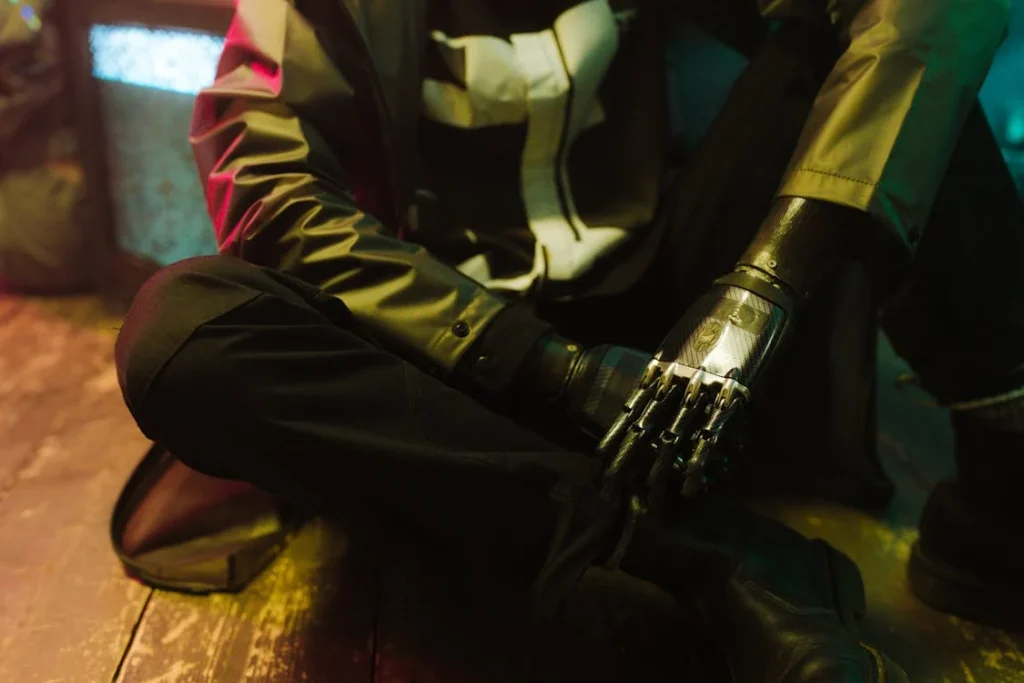
Overcoming the Challenge of Grip Reliability in Real Life
Designing a bionic hand that works in theory is one thing. Designing one that works in real life, day after day, is something else entirely. Life is not clean or predictable. It’s messy, fast, and full of little surprises. Sometimes your hands are wet. Sometimes you’re in a rush. Sometimes the thing you’re trying to hold is oddly shaped, heavy, or just plain slippery.
So when we talk about grip reliability, we’re talking about more than technical specs. We’re talking about trust. Can the hand be counted on, not just in the lab, but while crossing the street with a bag, stirring a hot bowl of dal, or texting during a train ride? That’s where most prosthetics get stuck. But at RoboBionics, we took a different path.
Challenge: Making the Grip Work in Every Situation
Many prosthetic hands perform well in demos. They can pick up a tennis ball or hold a plastic cup under perfect conditions. But when you ask them to hold a wet glass, or pick up a coin, or manage a phone while walking—they fall short. Why? Because they’re not built for real life. They’re built for tests.
We knew our users needed something better. So we made sure Grippy™ wasn’t just demo-ready. It was India-ready. That meant testing it on real objects in real homes, not just on foam blocks in a lab. We tested it with wet utensils, oily snack packets, coins, steel plates, notebooks, phones, and more.
And every time it didn’t perform perfectly, we improved it. We changed the finger padding. We updated the control software. We adjusted grip timing. Every version of Grippy™ became more responsive, more reliable, and more ready for life.
Now, when our users go about their day, they don’t need to think, “Will this hand drop something?” They know it will hold on, adjust, and react. That kind of reliability changes everything. It builds habits. It builds routine. It builds confidence.
Challenge: Making the Hand Durable and Easy to Maintain
A good grip isn’t just about what the hand can do. It’s about how long it can keep doing it. That’s why durability was one of our top priorities. We asked ourselves, “What happens when someone wears this hand every day for a year? What happens when it’s used in hot weather, in dusty rooms, or around water?”
We needed a hand that could take a hit—and keep going. So we built Grippy™ with high-quality local components, tested in India’s toughest environments. We sealed the electronics, used dust-resistant joints, and created a design that resists moisture and temperature changes.
We also made the hand easy to maintain. If something feels off or needs a tune-up, it can be serviced locally. No sending it overseas. No long waits. No huge bills. We wanted our users to feel supported, always.
This approach means Grippy™ isn’t fragile. It’s not something to use gently or once in a while. It’s made to work, every day, in every way.
Challenge: Supporting Emotional Comfort Alongside Physical Use
A grip is more than just a physical action. It’s emotional too. When someone loses a hand, they often lose more than function. They lose confidence. They lose the feeling of connection. And sometimes, they hesitate to use a prosthetic because it reminds them of what they’ve lost.
That’s why we put just as much care into the emotional comfort of using Grippy™ as we did into its mechanical performance. From the design to the onboarding process, we aim to make users feel proud—not self-conscious. The hand looks modern, but not flashy. It blends into daily life, but still has a certain dignity and elegance.
And we never rush the learning curve. We take time to train each user, support them as they try new tasks, and encourage them when it gets tough. Because it will get tough. But with the right support, people rise.
Some of our most powerful stories come from people who were scared at first. They didn’t think the hand would suit them. But a few weeks later, they’re opening jars, riding scooters, even painting. The grip gave them their rhythm back—and the courage to keep going.
Challenge: Creating a Hand That Doesn’t Just Work—It Feels Yours
A truly great grip doesn’t feel like something you use. It feels like something you own. Not just physically, but mentally. It feels like part of you. That’s the final challenge—and maybe the biggest.
We wanted our users to reach a point where they stopped thinking about the hand altogether. Where the grip felt automatic. Where the motions felt natural. Where they could trust it as much as their real hand.
To get there, we worked hard to tune the software, refine the movements, and personalize the settings. The hand isn’t just strong. It’s smart. It adjusts to the user’s pace, habits, and comfort level. Over time, that bond between the user and the hand becomes something real. Something invisible—but powerful.
And that’s when the magic happens. That’s when we hear someone say, “I forgot I was wearing it.” That’s when we know the grip has done more than hold an object. It’s held a dream.

Powering the Grip: The Hidden Challenge of Energy Efficiency
Every move a bionic hand makes—every grip, twist, or release—uses energy. And when a hand is built to mimic human motion in real time, that energy use can add up quickly. While most people focus on how well a hand grips, they don’t always think about what makes that grip possible. Behind every action is a silent, powerful engine: the battery.
At RoboBionics, we’ve learned that building the perfect grip means also building a smart power system. Because it doesn’t matter how advanced your sensors or motors are—if the battery runs out in the middle of your day, the hand becomes unusable. And that can turn excitement into frustration very fast.
Challenge: Avoiding Mid-Day Power Drops
Imagine you’re commuting to work. You’ve already used the hand to hold your toothbrush, pour your tea, zip your bag, and grip a moving train handle. It’s only 10 a.m., and the battery is half-drained. This was a common problem with earlier designs—not just in India, but around the world.
Many bionic hands, especially imported ones, weren’t built for all-day use in busy environments. They assumed users would wear the hand for limited tasks or in shorter sessions. But we know our users want more. They want to wear Grippy™ all day, from morning till night. And they want the hand to perform at full strength every single time they need it.
That’s why energy optimization became one of our top priorities. Not just longer battery life, but smarter battery life.
Challenge: Making the Hand Think Before It Acts
In a natural hand, your brain sends signals to your muscles only when movement is needed. You don’t waste energy flexing for no reason. We applied the same logic to Grippy™.
We developed a control system that activates motors only when needed. If the hand is at rest, it doesn’t draw unnecessary power. If the grip is already firm, it doesn’t keep squeezing. And when the user is just thinking or preparing to move, the sensors don’t react until the muscle signal reaches a clear threshold.
This “think-before-you-act” approach reduces power waste dramatically. It also creates a more natural experience. The hand doesn’t twitch or fidget. It only moves when the user wants it to.
Challenge: Fast Charging Without Heat or Hassle
Another real-world issue with many prosthetic hands is charging. Long charge times, bulky chargers, and overheating during power-ups make the experience annoying. And when you’re already juggling work, travel, or caregiving duties, the last thing you want is to be stuck near a wall socket for hours.
We solved this by developing a lightweight, fast-charging battery system that’s both safe and reliable. Grippy™ charges fully in a couple of hours and holds enough power for an entire day of active use. Whether you’re teaching, repairing, cooking, or walking long distances, you don’t have to worry about the hand quitting halfway through.
Even better, our battery packs are designed to be easily swappable. If someone wants to keep a spare charged pack ready, they can just pop it in and go—no tools, no downtime. This flexibility is especially helpful for people in remote areas or in jobs that require constant use.
Challenge: Designing for Rural and Low-Power Areas
We knew from the start that Grippy™ had to work in places where power cuts are common, and charging options might be limited. That’s why our system is optimized to handle a wide range of power sources—including basic mobile charging ports and power banks.
We also made sure the hand’s software includes an energy-saving mode. If the user expects to be in a low-power situation for an extended time, they can activate this mode to extend usage hours without losing grip functionality. It reduces motor intensity and background processes, stretching the battery while keeping the hand responsive.
This level of care may not be something most tech companies think about—but for us, it’s part of being truly India-first. Because solving grip design challenges doesn’t just mean improving the grip. It means making sure it can grip when and where it’s needed most.
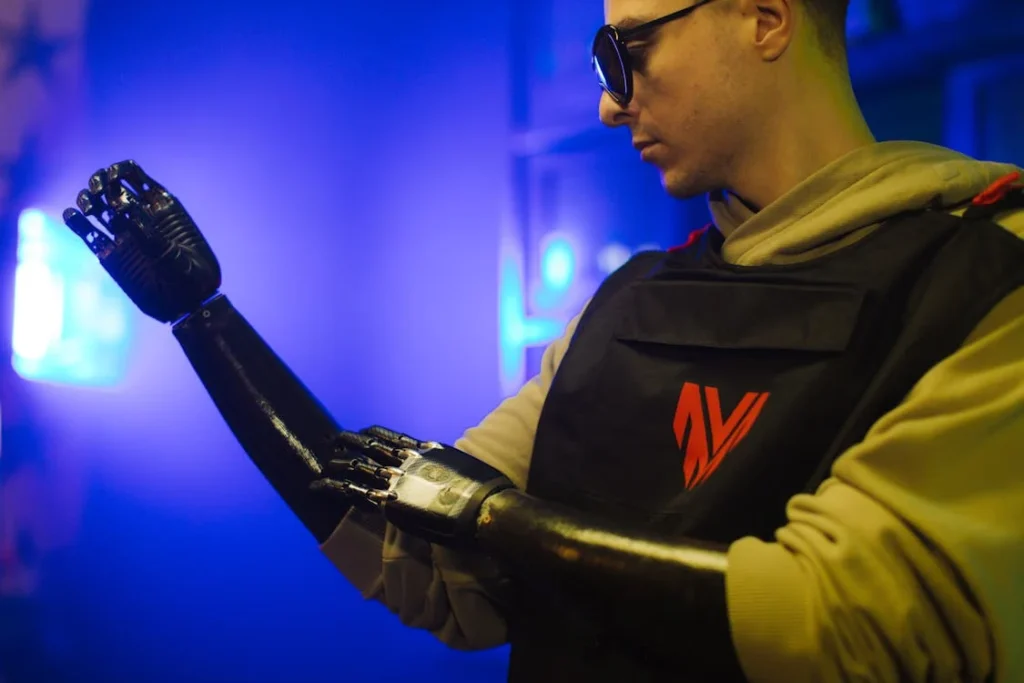
Where the Hand Meets the Body: Comfort, Fit, and Wearability
Even the smartest bionic hand won’t matter if it hurts to wear. That’s a truth we’ve learned through every conversation with our users. A great grip doesn’t start at the fingertips—it starts where the device meets the body. If the socket doesn’t fit well, or if the skin feels sore, tight, or overheated, the user won’t want to wear the hand. And if they’re not wearing it, the grip doesn’t matter at all.
That’s why at RoboBionics, we give just as much attention to the part of the hand you don’t see—the part that connects to the person. The socket, the liner, the straps, the weight balance—these are the things that decide whether a bionic hand becomes a daily companion or ends up on the shelf.
Challenge: Avoiding Skin Irritation and Pressure Points
The skin on the residual limb can be sensitive—especially if it’s newly healed, scarred, or uneven in shape. Many prosthetic sockets are made using rigid materials and basic measurements. They assume every arm is similar. But in reality, every user is different. What fits one person snugly might cause pressure sores or red patches in another.
Early on, we saw how much discomfort this caused. So we took a different approach. Each Grippy™ setup begins with a detailed fitting process. We don’t just measure. We listen. We ask about pain points, past experiences, and how the person moves during the day. Then we create a socket that distributes weight evenly, avoids high-pressure spots, and allows airflow.
We also work with top prosthetic centers to use soft liners and skin-friendly materials. These reduce friction, keep sweat away, and allow users to wear the hand longer without irritation. For those in hotter regions, we offer breathable designs that wick moisture and let the skin breathe.
Challenge: Keeping the Hand Secure Without Limiting Movement
A bionic hand needs to feel stable—but not like a cast. Many users have told us about past prosthetics that were either too loose or too tight. If the socket wobbles, the hand loses accuracy. If it’s too snug, the person avoids moving naturally. Both are bad for confidence, performance, and long-term wear.
To solve this, we designed our socket system to hold firm during motion, while allowing the arm to flex, rotate, and relax. We added support at key anchor points so the grip doesn’t feel like it’s pulling against the user. This means that whether you’re writing, reaching, lifting, or even running, the hand stays put without digging in.
We also offer adjustable strap systems for users whose limb shape may change throughout the day—like after exercise or long hours of standing. These small changes give users big freedom. They can keep moving without constantly readjusting or feeling weighed down.
Challenge: Managing Heat and Sweat in Indian Climates
Let’s face it—many prosthetic designs come from cooler countries. But in India, where temperatures can cross 40°C, comfort becomes a serious issue. Sweat builds up inside sockets. Skin becomes itchy or raw. And users simply remove the hand to get relief.
We couldn’t ignore this. So we worked closely with material experts to design sockets that don’t trap heat. Our liners use breathable, layered fabric that moves moisture away from the skin. The outer shell includes discreet air channels that allow heat to escape.
And for areas with especially hot or humid weather, we offer lightweight versions of the socket that reduce material thickness without compromising strength. We also teach our users how to clean and care for their skin and socket so they stay comfortable day after day.
Because the goal isn’t just wearing Grippy™—it’s wanting to wear it, all day long.
Challenge: Balancing the Weight for Natural Motion
A bionic hand must feel like an extension of your body—not a gadget strapped to your arm. But if it’s too heavy, or the weight sits awkwardly, the user tires quickly. Even a small imbalance can make a big difference when worn for hours.
We paid careful attention to the weight distribution in Grippy™. We used advanced composites and high-strength plastics to reduce bulk without losing durability. The motors are compact and balanced. The internal layout of the battery and wiring is placed to keep the center of gravity close to the body.
This helps the hand move smoothly and rest comfortably. Users don’t feel like they’re swinging a tool—they feel like they’re moving a part of themselves. That’s what turns technology into trust.
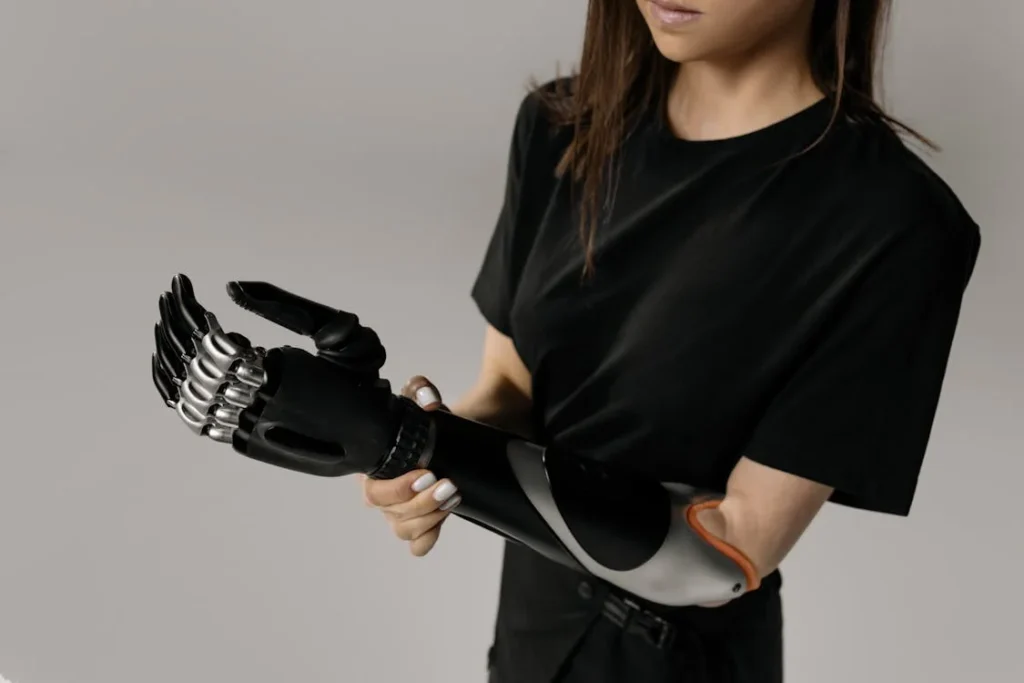
Beyond the Grip: Reclaiming Confidence, Identity, and Joy
When someone loses a hand, they lose much more than physical ability. There’s an invisible grief that often goes unspoken—a quiet mourning of routines disrupted, small joys missed, and confidence shaken. It’s not just about not being able to hold a spoon. It’s about hesitating to go out, avoiding photos, or shrinking in public. It’s about not feeling whole.
At RoboBionics, we’ve spent years working with people at every stage of their journey—some fresh from surgery, others years into limb loss. And we’ve learned that a good grip does more than hold things. It helps people hold on to themselves again.
Challenge: Facing the World After Limb Loss
There’s no easy way to say it—losing a hand changes how people see you, and how you see yourself. Some of our users told us they avoided meeting new people because they were tired of answering questions. Others said they stopped trying certain activities, not because they couldn’t—but because they were afraid to try and fail.
That kind of self-protection is natural. But over time, it limits joy. So when someone first wears Grippy™, it’s not just a new tool. It’s a moment filled with emotion. There’s excitement. There’s fear. Sometimes there are tears. But there’s also hope.
We don’t rush people through this. We understand that healing doesn’t happen in a straight line. We give them space to feel everything—while standing beside them with quiet support.
And we remind them: this hand is not a replacement. It’s a return. Not just to function—but to life.
Challenge: Learning to Trust Yourself Again
The first few days with a bionic hand can feel clumsy. The grip may slip. Movements may feel off. Some people get frustrated and say, “Maybe this isn’t for me.” That’s where emotional support matters as much as tech support.
Our team gently guides each person through early doubts. We don’t just hand over the device—we stay in touch. We send messages, we check in, we celebrate every little milestone. First time holding a spoon? Amazing. First zippered hoodie? Incredible. These are not small moments. They’re victories. And each one rebuilds a sense of control.
Over time, users stop watching their hand closely. The grip becomes automatic. And that freedom—of not needing to focus on the hand every moment—is when the confidence truly returns. That’s when users start exploring again, stepping outside, engaging in life without hesitation.
Challenge: Redefining Identity With Pride
Many people worry that a prosthetic hand will make them stand out in a bad way. They cover it with sleeves. They tuck it behind their back in photos. They treat it like something to hide. But with Grippy™, something powerful happens. Users begin to take pride in it. Not because it looks fancy, but because it helps them feel strong, capable, and whole again.
We’ve seen users who once covered their hand now wear it proudly—showing friends how it moves, posting videos online, even customizing it with their favorite colors or stickers. They stop being “someone with a prosthetic” and start being themselves again—a parent, a teacher, a gamer, a dancer.
One of our youngest users told us, “I feel like a superhero.” Another said, “People don’t feel sorry for me anymore. They’re impressed.”
That shift—from self-consciousness to self-celebration—is one of the most beautiful transformations we witness. And it’s made possible not just by what the hand can do, but how it helps people feel.
Challenge: Finding Joy in the Little Things Again
There’s nothing small about being able to tie your shoelace after months of trying. Or flip a page in a book. Or hold a hot chai glass without help. These tiny actions carry enormous emotional weight. They mark a return to independence—a word that means everything after limb loss.
But what makes Grippy™ truly special is how it helps people not just survive, but smile again. We’ve seen artists who pick up a brush for the first time in years. A home cook who rolls out roti dough. A grandfather who lifts his grandson into his arms confidently.
These aren’t features on a spec sheet. These are stories of joy. Of healing. Of life in motion.
Because in the end, the best grip is the one that gives you your life back—not just your function.
Conclusion
At RoboBionics, we know that building a bionic hand isn’t just about mechanics. It’s about restoring movement, dignity, and identity. Every challenge in grip design—whether it’s speed, pressure, comfort, power, or confidence—affects real people in real moments. That’s why we don’t stop at making hands that work. We make hands that belong.
Grippy™ is more than a product. It’s a promise—to move with you, adapt to your life, and help you feel like yourself again. Whether you’re stirring tea, writing your name, or reaching out for a loved one, our goal is simple: to make every grip feel natural, and every moment feel yours.
The journey from loss to confidence is never easy. But with care, design, and belief in human potential, it becomes possible. And we’re proud to walk that path with every user—one strong, gentle, and meaningful grip at a time.



